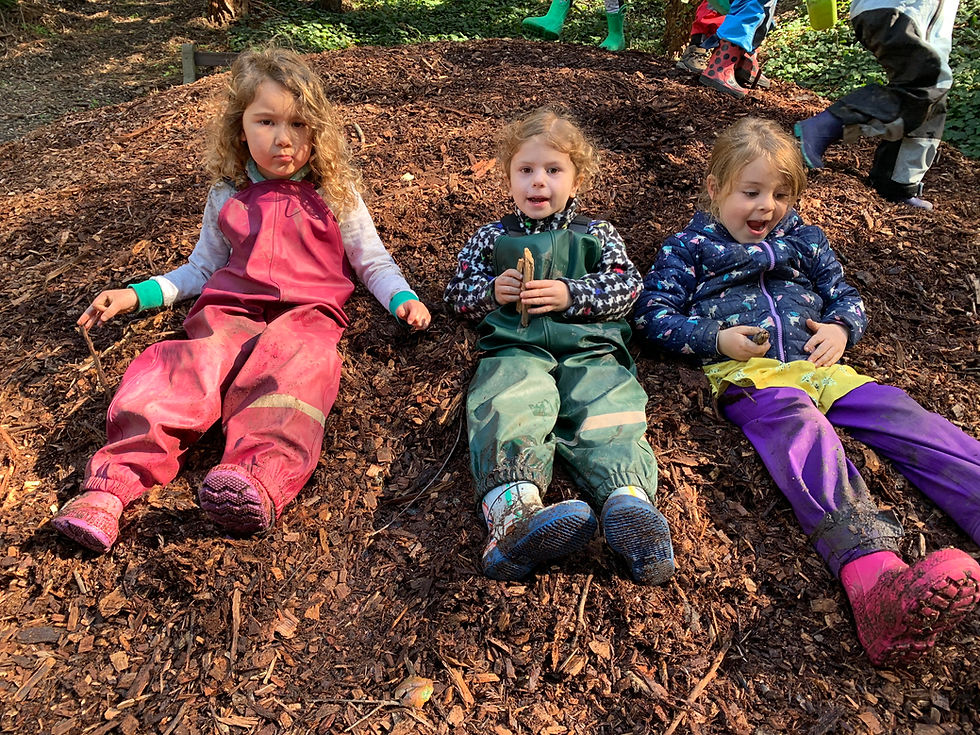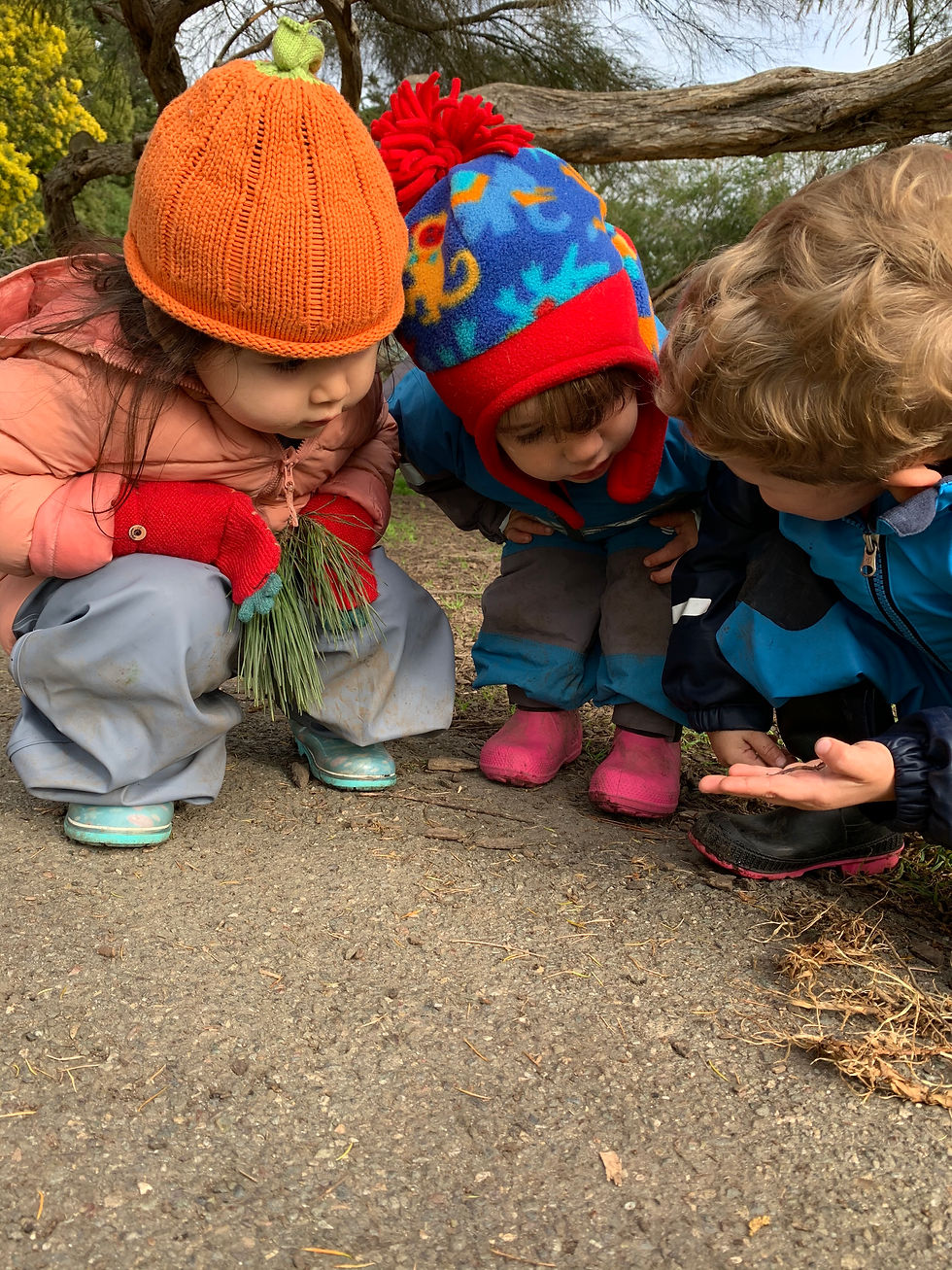Friendships in the Forest
- Emerging Sprouts

- Feb 24, 2020
- 4 min read

At Emerging Sprouts Forest School we emphasize care and concern for everyone. Everyone in our class is considered a friend. Teachers use language to say things such as, “Let’s wait for all of our friends to be ready”, or “I see one of our friends is upset, should we check in with them?”.
We believe that by leading with the notion that everyone is a friend at forest school, we can teach our children valuable, useful life lessons rooted in how we choose to treat one another. Preschoolers are building their toolbox to understand social norms, by using age appropriate problem-solving skills, and thinking through an adverse situations be we help them practice. As desperately as they want friends, sometimes preschoolers don’t know always know how to treat one another with care and respect. At Emerging Sprouts this is where caregivers and teachers can help model and shift their language towards ways to build friendship and communicate with peers.
Orion and Nathan often gravitate toward each other. They choose to sit together for snack, play together by pretending to take a nap in the mulch pile, sit near each other on the blue tarp and carry on a conversation in the forest.
4 Life Lessons We Hope to Teach at Forest School
1. Friends can have disagreements, and a range of emotions and still remain friends.
On a daily basis we coach students to notice one another's emotions and to “check-in” with one another (a process developed by our teachers and shared with children in the beginning. of the school year) . We remind children that it's okay to be upset and that being upset with someone doesn’t mean they’re not friends anymore. It is natural to get mad, frustrated or disappointed with friends and this is ok. We can teach children to talk about how they are feeling, and to listen to one another. We believe by validating their feelings and giving them space to feel a range of emotions, our children will learn that all feelings are valid. Sometimes children choose to take alone space from a friend and come back later to play when they are ready, knowing this option is there helps students to know disagreements are okay and you can keep your friends even if you do not agree on everything.
Aviv and Kailash learning to take turns and check-in with one another.
2. Friends don’t always have to play together.
Trial and Error comes up a lot in our forest classroom, but not just in the scientific concepts we are testing out on a daily basis, also in the social/emotional realm of Forest School. At this age children are learning how to interact with one another and testing out what works and what does not work. While these are developmentally appropriate behaviors sometimes it result in hurt feelings. As caregivers we see our role as curators in the children's social and emotional experience, one way we hold space for young children is to help them put words to their feelings and communicate that with their classmates. By choosing to let them express their feelings we also teach children that they can take space from a friend without it meaning the friendship is over. As teachers, we also intentionally help students try new activities and/or choose what they want to play independent of what someone else is doing. Such as, “I’m climbing this tree now, and I’ll play ice cream stand with you later”.

Above: Violet wanted to sit next to Eva, but Mina was there first and choose to remain there.
3. We can have many friends and friends can have other friends.
A concept ripe with curiosity in our class currently is how friendships begin, how are they maintained, and what it means to be a friend? Teachers remind students that it is ok to have many friends in our lives. We help validate that students have school friends and friends outside of school, and that sometimes they can even be both. We can role model and voice this as teachers through our interactions with other teachers, staff and/or parents.
4. We care about everyone and we keep everyone safe at school.
Big feelings happen in our forest classroom and reactions from other children in our class are often based in curiosity. Children may remark "Why is he so upset?" wanting to know what is happening emotionally for another student shows empathy and care. Sometimes it may also be difficult for a 3-year-old to witness another student having a temper tantrum, in these moments teachers help to set clear and loving boundaries about what is safe for our own bodies and for all of our friends at Forest School. Teachers help to remind students that feelings are welcome at school as long as our behaviors are keeping everyone safe. For example, frustration is an emotion we all feel at times, while throwing an object might be a child's first reaction to feeling frustrated the teachers are there to help show healthy ways to redirect a big emotion into a safe behavior. Sometimes this looks like offering to stomp feet or ask for an alone space. At this point in the school year one visiting our forest classroom will even hear students in conversations assuring one another "I will keep you safe at forest school."





















Comments